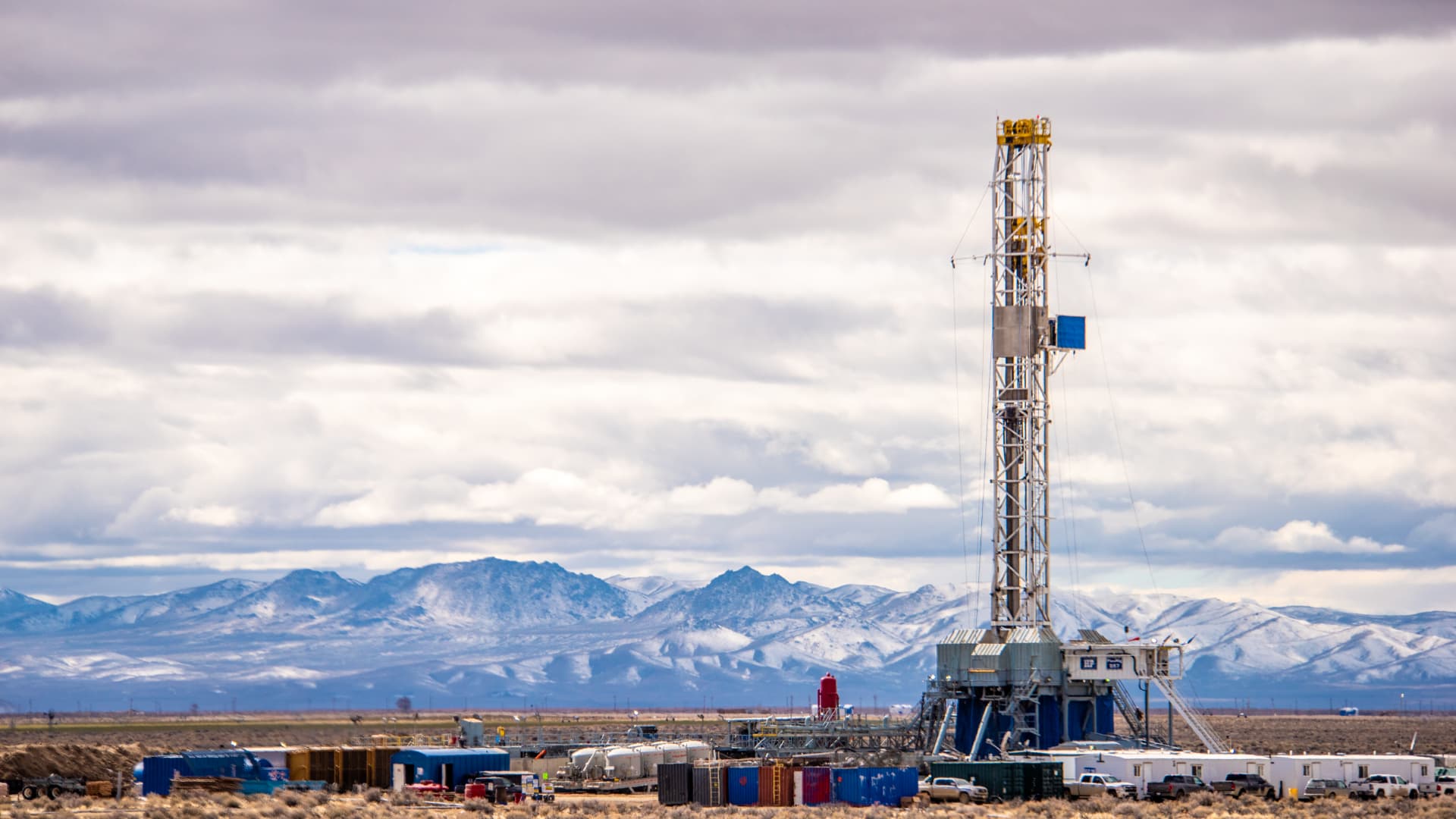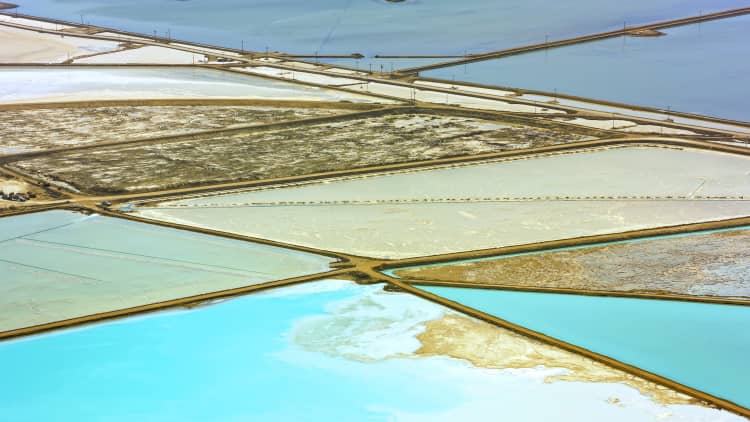Fervo Energy hits milestone in using oil drilling technology to tap geothermal energy


Fervo Energy’s full-scale commercial pilot, Project Red, in northern Nevada.
Photo courtesy Fervo Energy
Geothermal startup Fervo Energy announced a key technical milestone on Tuesday, paving the way for geothermal energy to play a bigger role in the transition to clean energy.
Fervo drills deep wells and pumps water into them. The water grows hot from the heat of the earth, then Fervo pumps it back to the surface, where a turbine converts that heat to electricity.
Fervo successfully completed a 30-day test, considered an industry standard for geothermal, at its commercial pilot plant in northern Nevada, the company said in a statement. In the test, Fervo drilled down drilled down to 7,700 feet and then turned to drill another 3,250 feet horizontally, and internal temperatures reached roughly 375 degrees Fahrenheit.
The test at its pilot plant achieved conditions that would generate 3.5 megawatts of electricity production, the company said. A single megawatt is roughly enough electricity to meet the demand of 750 homes at once.
Fervo has just started construction on a 400-megawatt project that it expects to be online by 2028, which would power approximately 300,000 homes.
“Fervo’s successful commercial pilot takes next-generation geothermal technology from the realm of models into the real world and starts us on a path to unlock geothermal’s full potential,” Jesse Jenkins, macro-scale energy systems engineer and professor at Princeton, said in a written statement.
Currently, most geothermal energy resources are located near tectonic plate boundaries where magma gets close to the earth’s surface, heating up water trapped in the earth’s surface nearby. In the United States, geothermal energy supplies only 0.4% of electricity right now.
Instead of relying on naturally occurring conditions, Fervo is using drilling technology developed by the oil and gas industry with hydraulic fracturing to create reservoirs in rocks deep underground.
“By applying drilling technology from the oil and gas industry, we have proven that we can produce 24/7 carbon-free energy resources in new geographies across the world,” Tim Latimer, the CEO of Fervo Energy, said in a written statement.
Fervo Energy co-founders, Jack Norbeck (left) and Tim Latimer.
Photo courtesy Fervo Energy
A decade ago, Latimer was working in the oil and gas industry as a drilling engineer.
“I loved the work, but I was passionate about climate change. I saw all the tech advancement around me and realized that it could be used for geothermal energy,” Latimer said in a thread he posted on Twitter on Tuesday. Developments in oil and gas drilling, like the development of the polycrystalline diamond cutter, “changed the game,” Latimer said.
“With dramatically lower drilling costs, it would now be possible to drill down to depth and then drill horizontally for enhanced geothermal, significantly increasing the productivity of the resource, and enabling development anywhere,” Latimer wrote on Twitter.
When Latimer first had the idea to use developments in oil and gas drilling to tap into geothermal energy, he faced a lot resistance. The one place he found an interested ear was at Stanford’s geothermal program, where he went to grad school and in 2017 co-wrote and published a paper on the topic. That paper was the foundation for Fervo Energy, which Latimer launched in 2017 with Jack Norbeck, also from Stanford’s geothermal program.
“The last six years have been quite a journey. I never expected how much skepticism and pushback we would receive for what we thought was an obvious idea,” Latimer said in his Twitter thread. “So we set out to systematically prove this was a truly revolutionary, and viable, way of doing geothermal.”
They did find believers, though, and have since raised over $200 million in investment, Latimer said on Twitter.
Google has been a leader in its commitment to operate on 24-7 carbon-free energy by 2030. “Solving climate change is humanity’s next big moonshot,” Google GEO Sundar Pichai has said.
To deliver on its goal to operate on 24-7 carbon-free energy by 2030, Google has had to buy a lot of renewable energy to support all of its energy-hungry computing processes.
In 2021, Google singed a partnership with Fervo to develop a geothermal power project.
Unlike wind and solar energy, which are intermittent, geothermal energy is an “‘always-on’ carbon-free resource that can reduce our hourly reliance on fossil fuels,” Michael Terrell, Google’s senior director for energy and climate, wrote in 2021 when the partnership was first announced.
“Achieving our goal of operating on 24/7 carbon-free energy will require new sources of firm, clean power to complement variable renewables like wind and solar,” said Terrell in a statement published Tuesday. “We partnered with Fervo in 2021 because we see significant potential for their geothermal technology to unlock a critical source of 24/7 carbon-free energy at scale.”
Fervo Energy’s full-scale commercial pilot, Project Red, in northern Nevada.
Photo courtesy Fervo Energy
As part of the partnership, Google is developing the artificial intelligence and machine learning systems to improve Fervo’s efficiency, and Fervo is adding clean energy to the grid in Nevada, where Google is a large clean energy customer.
The U.S. Department of Energy has also launched what it calls the “Enhanced Geothermal Shot,” which is an effort to reduce the cost of enhanced geothermal energy by 90% to to $45 per megawatt hour by 2035. The Department of Energy says it hopes enhanced geothermal systems can potentially provide clean energy to 65 million American homes.
Fervo still has a long road ahead from building a pilot plant to commercializing geothermal energy at scale, but Wilson Ricks, who works in Jenkins’ lab at Princeton and cowrote a paper on the role of geothermal energy in future decarbonized energy systems, says Fervo’s technical milestone is a real milestone.
“This is a very significant milestone in enhanced geothermal systems development. It is the first application of the advanced drilling and well stimulation techniques developed in the shale oil and gas boom to geothermal, and has demonstrated that these can be used to create artificial geothermal reservoirs delivering high flow rates,” Ricks told CNBC. “There is still more development to be done on the path to large-scale and cost-competitive commercial systems, but the significance of this achievement shouldn’t be understated.”
The kind of enhanced geothermal energy systems, like those that Fervo is developing, “could do double-duty as a form of long-duration energy storage, enhancing their ability to complement wind and solar in a decarbonized grid,” Ricks told CNBC.